Rotax 503 in cabin heater, Rotax air-cooled engine cabin heater, Cabin
heater for Challenger ultralight aircraft using Rotax 477 and Rotax 503 engine.
|
|
|
|
|
Rotax 447 in cabin heater, Rotax 503 in cabin heater, Rotax air-cooled
engine cabin heater.
Ventilating system for Quad City Challenger, a bit of theory. |
|
|
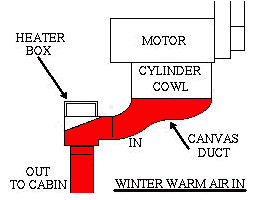 |
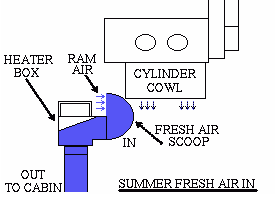 |
|
WINTER |
SUMMER |
In winter, warm air is pushed through
cylinder cowl, into the fabric duct, then redirected by the baffle
into the heater box and down into the 4 inch aluminum duct in the
cabin.
In summer, fresh air flows into the air scoop and is redirected by the
baffle into the 4 inch round aluminum duct in the cabin.
|
|
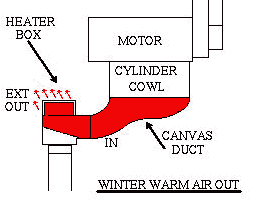 |
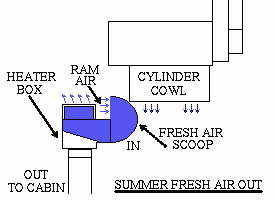 |
|
WINTER TOO WARM |
SUMMER TOO COLD |
| In winter, when the cabin gets too hot
or in summer when the cabin gets to cold, a push pull control cable
moves the baffle to expel the air out. |
|
THE CHALLENGER SYSTEM |
| This system is based on the standard
heat box used before on air-cooled motor airplanes. |
|
OPERATION |
| Warm air is pushed out of the cylinder
cowl and transferred via a fabric duct to a control box. From this
box, via a remotely controlled baffle, air is directed inside through
a conduit or expelled outside. The fabric duct is interchangeable with
an air scoop. Fresh ram air caught by this scoop is sent to the box
and controlled the same way as described before. |
|
COMPARISON |
Heaters that are attached to the motor
all have the same problem vibration! It's just a
matter of time. Our heater box sits on the two lower curved ribs under the
motor, considerably reducing the vibration. Test have shown our
heater box will
survive many years before it needs servicing.
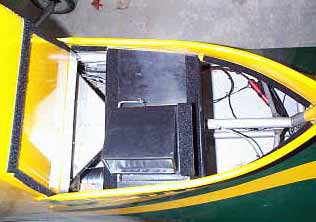 Many Challenger owners had to lower the
top rib to be able to install their heater box on the motor. This
modification alters the air flow very close to the propeller and could
add turbulence in this area, producing more vibrations and slightly
reducing the prop's efficiency.
With our system, the fabric duct uses the resilient space between the
top rib and cylinder cowl, entirely closing this gap. Many Challenger
owners had complained about the fact they had to remove the heater box
from the cowling to service the plugs.
With our system, removal of the
fabric duct is easy since it's attached to the cowling with Velcro.
By covering the cylinder cowl, warm air outlet and spark plug area,
the system collects all the warm air that's possible to retrieve from
the motor.
In our test, at -10° F, we were able to keep inside temperature to 50°F,
quite comfortable. |
| |
|
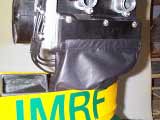
THE FABRIC DUCT
Made of oil, UV and cold crack resistant fabric, the duct is resistant
to all weather.
It is also very easy to clean. Velcro at both ends
simplify its installation. |
THE
AIR SCOOP
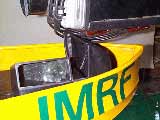
Made with the same fabric, the scoop is solidly attached to the heater
box rendering it impossible to be thrown into the prop. |
|
THE HEATER BOX |
Made from composite,
the heater box is light and rugged. The box sits on a base to permit
its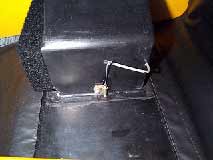 installation directly on the lower curved ribs. Again, Velcro is used
to attach the base to the ribs.
installation directly on the lower curved ribs. Again, Velcro is used
to attach the base to the ribs. A 4 inch
flange, under the base, accepts 4 inch aluminum tubing, with solid
tubing preferred. Inside, a fabric controlled baffle directs air out
of or into the cabin via the base flange.
The control arm and baffle frame are from galvanized
steel. The heater box can be painted with your color choice. The
complete heater box assembly weighs just under a pound. |
| |
|
COVERS
To complete winterization, the under motor and
firewall areas have to
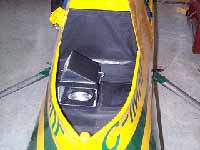 be totally closed. If not properly closed, warm
air will be sucked out rendering it impossible to heat up the cabin. be totally closed. If not properly closed, warm
air will be sucked out rendering it impossible to heat up the cabin.
We supply two covers with every kit, one for the
rear section and one to cover front part and the firewall section.
(For now these covers are adjusted to fit the new
Challenger version.) |
| |
|
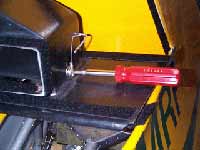
CONTROL CABLE
The control cable is a push pull type. Its length, 156 inches is more
than enough to install the control knob at a convenient location of
your choice. |
| |
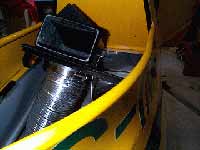
HARDWARE SUPPLIED
Except for the aluminum tubing, everything needed is included. The
tube can be easily bought locally for a price lower than its shipping
cost. |
| |
INSTALLATION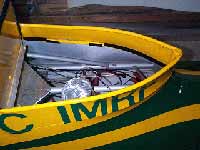
To make it easy to install, even with the motor installed,
self-adhesive Velcro is used. The only important task is
to clean all areas before attaching any Velcro.
The box is also clamped to the
aluminum tube and control cable rendering it impossible to fly into
the prop. All Velcro attached to the cylinder cowl is secured with pop
rivets at both ends.
Instructions are complete including several
drawings.
|
|
NOTE |
Our heater box has been installed and tested on our plane
for 5 years now (over 350 hrs) and has never needed servicing. It is a
cool idea in summer and a warm experience in winter.
|
|
MODEL: |
HBK1 for CHALLENGER I |
|
| |
HBK2 for CHALLENGER II |
|
|
|
|
|
|
1 2 3 4 5 6 7 8 9 10 11 12 13
14
Index for this section. Main Index |
 |
|
Ultralight Aircraft News Web Magazine .
No part of this
publication may be copied or distributed, transmitted, transcribed,
stored in a retrieval system, or translated into any human or computer
language, in any form or by any means, electronic, mechanical,
manual, or otherwise, without written permission of Ultralight Aircraft News.
By copying or paraphrasing the intellectual
property on this site, you're automatically signing a binding contract
and agreeing to be billed $10,000 payable immediately. Copyright Ultralight News
|
|








 installation directly on the lower curved ribs. Again, Velcro is used
to attach the base to the ribs.
installation directly on the lower curved ribs. Again, Velcro is used
to attach the base to the ribs. be totally closed. If not properly closed, warm
air will be sucked out rendering it impossible to heat up the cabin.
be totally closed. If not properly closed, warm
air will be sucked out rendering it impossible to heat up the cabin. 

